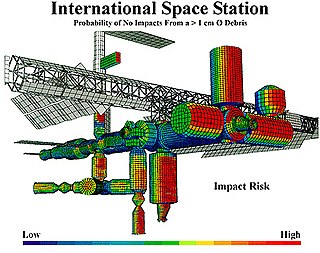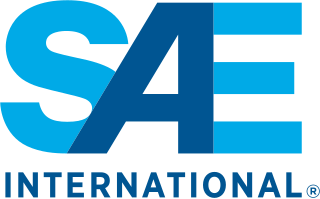Related Research Articles

Risk management is the identification, evaluation, and prioritization of risks followed by coordinated and economical application of resources to minimize, monitor, and control the probability or impact of unfortunate events or to maximize the realization of opportunities.

Safety engineering is an engineering discipline which assures that engineered systems provide acceptable levels of safety. It is strongly related to industrial engineering/systems engineering, and the subset system safety engineering. Safety engineering assures that a life-critical system behaves as needed, even when components fail.

Epidemiology is the study and analysis of the distribution, patterns and determinants of health and disease conditions in a defined population.

Fault tree analysis (FTA) is a type of failure analysis in which an undesired state of a system is examined. This analysis method is mainly used in safety engineering and reliability engineering to understand how systems can fail, to identify the best ways to reduce risk and to determine event rates of a safety accident or a particular system level (functional) failure. FTA is used in the aerospace, nuclear power, chemical and process, pharmaceutical, petrochemical and other high-hazard industries; but is also used in fields as diverse as risk factor identification relating to social service system failure. FTA is also used in software engineering for debugging purposes and is closely related to cause-elimination technique used to detect bugs.

A safety-critical system or life-critical system is a system whose failure or malfunction may result in one of the following outcomes:

Hazard analysis and critical control points, or HACCP, is a systematic preventive approach to food safety from biological, chemical, and physical hazards in production processes that can cause the finished product to be unsafe and designs measures to reduce these risks to a safe level. In this manner, HACCP attempts to avoid hazards rather than attempting to inspect finished products for the effects of those hazards. The HACCP system can be used at all stages of a food chain, from food production and preparation processes including packaging, distribution, etc. The Food and Drug Administration (FDA) and the United States Department of Agriculture (USDA) require mandatory HACCP programs for juice and meat as an effective approach to food safety and protecting public health. Meat HACCP systems are regulated by the USDA, while seafood and juice are regulated by the FDA. All other food companies in the United States that are required to register with the FDA under the Public Health Security and Bioterrorism Preparedness and Response Act of 2002, as well as firms outside the US that export food to the US, are transitioning to mandatory hazard analysis and risk-based preventive controls (HARPC) plans.
Failure mode and effects analysis is the process of reviewing as many components, assemblies, and subsystems as possible to identify potential failure modes in a system and their causes and effects. For each component, the failure modes and their resulting effects on the rest of the system are recorded in a specific FMEA worksheet. There are numerous variations of such worksheets. An FMEA can be a qualitative analysis, but may be put on a quantitative basis when mathematical failure rate models are combined with a statistical failure mode ratio database. It was one of the first highly structured, systematic techniques for failure analysis. It was developed by reliability engineers in the late 1950s to study problems that might arise from malfunctions of military systems. An FMEA is often the first step of a system reliability study.
Reliability engineering is a sub-discipline of systems engineering that emphasizes the ability of equipment to function without failure. Reliability describes the ability of a system or component to function under stated conditions for a specified period of time. Reliability is closely related to availability, which is typically described as the ability of a component or system to function at a specified moment or interval of time.

Safety culture is the collection of the beliefs, perceptions and values that employees share in relation to risks within an organization, such as a workplace or community. Safety culture is a part of organizational culture, and has been described in a variety of ways, notably the National Academies of Science and the Association of Land Grant and Public Universities have published summaries on this topic in 2014 and 2016.

In causal inference, a confounder is a variable that influences both the dependent variable and independent variable, causing a spurious association. Confounding is a causal concept, and as such, cannot be described in terms of correlations or associations. The existence of confounders is an important quantitative explanation why correlation does not imply causation. Some notations are explicitly designed to identify the existence, possible existence, or non-existence of confounders in causal relationships between elements of a system.
A hazard analysis is used as the first step in a process used to assess risk. The result of a hazard analysis is the identification of different types of hazards. A hazard is a potential condition and exists or not. It may, in single existence or in combination with other hazards and conditions, become an actual Functional Failure or Accident (Mishap). The way this exactly happens in one particular sequence is called a scenario. This scenario has a probability of occurrence. Often a system has many potential failure scenarios. It also is assigned a classification, based on the worst case severity of the end condition. Risk is the combination of probability and severity. Preliminary risk levels can be provided in the hazard analysis. The validation, more precise prediction (verification) and acceptance of risk is determined in the risk assessment (analysis). The main goal of both is to provide the best selection of means of controlling or eliminating the risk. The term is used in several engineering specialties, including avionics, food safety, occupational safety and health, process safety, reliability engineering.

ARP4761, Guidelines and Methods for Conducting the Safety Assessment Process on Civil Airborne Systems and Equipment is an Aerospace Recommended Practice from SAE International. In conjunction with ARP4754, ARP4761 is used to demonstrate compliance with 14 CFR 25.1309 in the U.S. Federal Aviation Administration (FAA) airworthiness regulations for transport category aircraft, and also harmonized international airworthiness regulations such as European Aviation Safety Agency (EASA) CS–25.1309.
Failure mode effects and criticality analysis (FMECA) is an extension of failure mode and effects analysis (FMEA).

The Swiss cheese model of accident causation is a model used in risk analysis and risk management, including aviation safety, engineering, healthcare, emergency service organizations, and as the principle behind layered security, as used in computer security and defense in depth. It likens human systems to multiple slices of Swiss cheese, which has randomly placed and sized holes in each slice, stacked side by side, in which the risk of a threat becoming a reality is mitigated by the differing layers and types of defenses which are "layered" behind each other. Therefore, in theory, lapses and weaknesses in one defense do not allow a risk to materialize, since other defenses also exist, to prevent a single point of failure. The model was originally formally propounded by James T. Reason of the University of Manchester, and has since gained widespread acceptance. It is sometimes called the "cumulative act effect".
Process safety is an interdisciplinary engineering domain focusing on the study, prevention, and management of large-scale fires, explosions and chemical accidents in process plants or other facilities dealing with hazardous materials, such as refineries and oil and gas production installations. Thus, process safety is generally concerned with the prevention of, control of, mitigation of and recovery from unintentional hazardous materials releases that can have a serious effect to people, plant and/or the environment.
An event tree is an inductive analytical diagram in which an event is analyzed using Boolean logic to examine a chronological series of subsequent events or consequences. For example, event tree analysis is a major component of nuclear reactor safety engineering.
A process hazard analysis (PHA) (or process hazard evaluation) is an exercise for the identification of hazards of a process facility and the qualitative or semi-quantitative assessment of the associated risk. A PHA provides information intended to assist managers and employees in making decisions for improving safety and reducing the consequences of unwanted or unplanned releases of hazardous materials. A PHA is directed toward analyzing potential causes and consequences of fires, explosions, releases of toxic or flammable chemicals and major spills of hazardous chemicals, and it focuses on equipment, instrumentation, utilities, human actions, and external factors that might impact the process. It is one of the elements of OSHA's program for Process Safety Management.

In simple terms, risk is the possibility of something bad happening. Risk involves uncertainty about the effects/implications of an activity with respect to something that humans value, often focusing on negative, undesirable consequences. Many different definitions have been proposed. The international standard definition of risk for common understanding in different applications is "effect of uncertainty on objectives".
ISO/IEC 31010 is a standard concerning risk management codified by The International Organization for Standardization and The International Electrotechnical Commission (IEC). The full name of the standard is ISO.IEC 31010:2019 – Risk management – Risk assessment techniques.
Failure modes, effects, and diagnostic analysis (FMEDA) is a systematic analysis technique to obtain subsystem / product level failure rates, failure modes and diagnostic capability. The FMEDA technique considers:
References
- 1 2 Card, Alan J.; Ward, James R.; Clarkson, P. John (2012). "Beyond FMEA: The Structured What-if Technique (SWIFT)". Journal of Healthcare Risk Management . 31 (4): 23–29. doi:10.1002/jhrm.20101. PMID 22528401.
- 1 2 3 Potts, Henry W.W.; Anderson, Janet E.; Colligan, Lacey; Leach, Paul; Davis, Sheena; Berman, Jon (2014). "Assessing the Validity of Prospective Hazard Analysis Methods: A Comparison of Two Techniques". BMC Health Services Research . 14 (1): 41. doi: 10.1186/1472-6963-14-41 . PMC 3906758 . PMID 24467813.
- 1 2 Crawley, Frank (2020). A Guide to Hazard Identification Methods (2nd ed.). Amsterdam and Oxford: Elsevier. doi:10.1016/C2018-0-05378-5. ISBN 978-0-12-819543-7.
- ↑ Ward, James; Clarkson, John; Buckle, Peter; Berman, Jon; Lim, Rosemary; Jun, Thomas (2010). Prospective Hazard Analysis: Tailoring Prospective Methods to a Healthcare Context. Research Project PS/035. Patient Safety Research Programme of the Department of Health (V1.1 ed.). Cambridge: University of Cambridge. Archived from the original on 2023-12-15. Retrieved 2023-12-15.